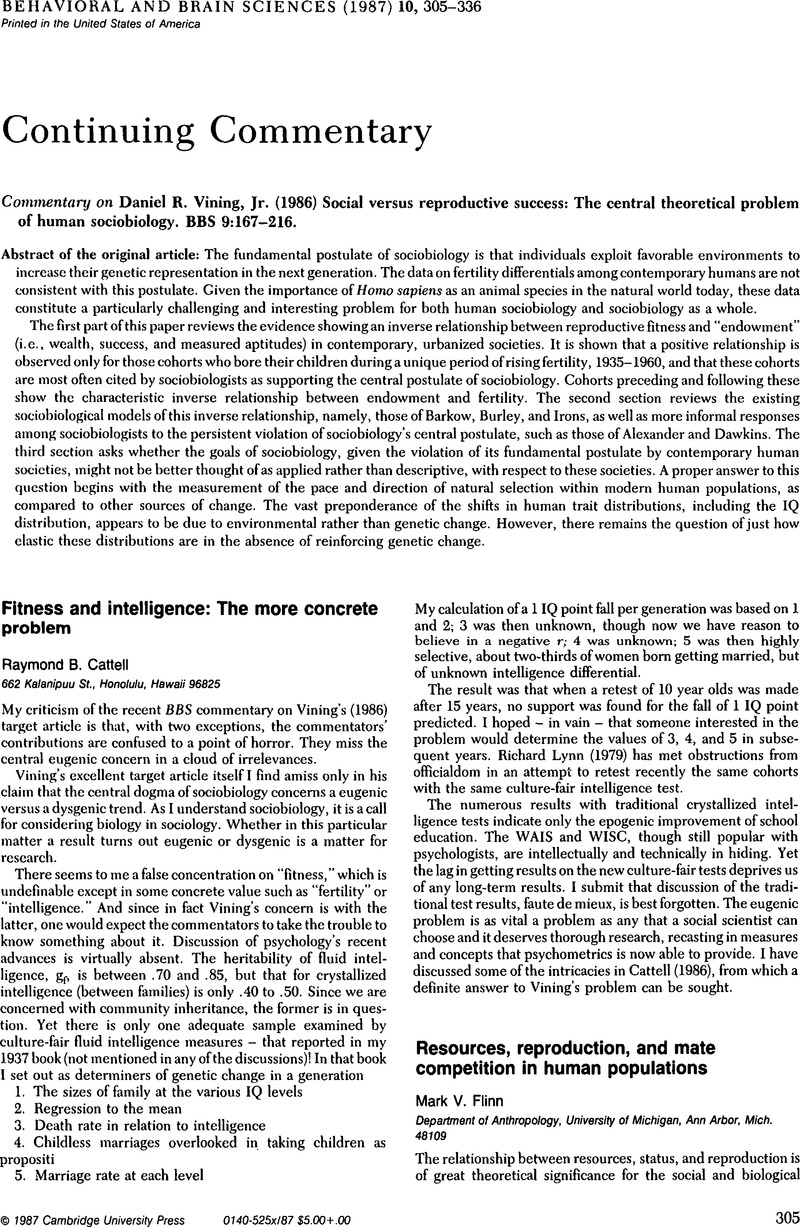Crossref Citations
This article has been cited by the following publications. This list is generated based on data provided by Crossref.
Vining, Daniel R.
Bygren, Lars
Hattori, Kanetoshi
Nystrom, Sune
and
Tamura, Shojiro
1988.
IQ/fertility relationships in Japan and Sweden.
Personality and Individual Differences,
Vol. 9,
Issue. 5,
p.
931.



